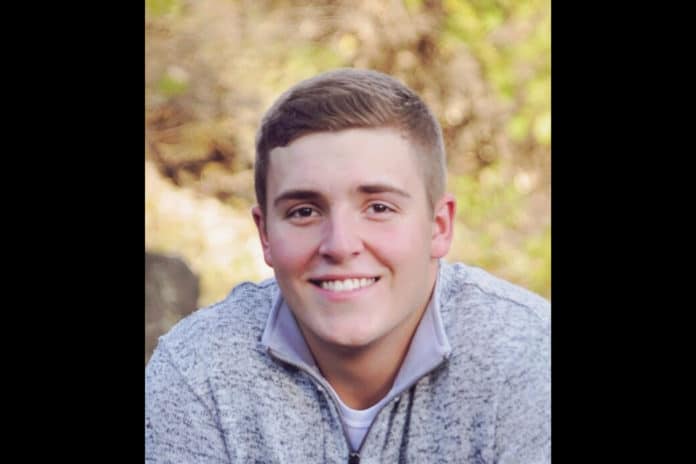Caleb Malek was born in Northfield, Minn., in October 1997. Almost 24 years later, the young man who’d had a promising future died in a detox facility not far from there.
His mother, Jill Adams, has a message for other parents: her nightmare could become your nightmare, too.
When we spoke this week, Adams shared the tragic account of how Caleb became one of millions of young people who are dying from opioid overdoses.
Caleb was a big fish in his relatively small town. A gifted athlete, he was courted by universities and professional baseball teams while a junior in high school. It was a stressful time. Unbeknownst to his mother, Caleb began using Xanax to manage his anxiety.
He was destined for Indiana when, during his senior year, he was pulled over with marijuana in his vehicle. He lost his scholarship.
Caleb’s fall from grace didn’t go unnoticed in the community where he was often featured on the front page of the newspaper.
He considered joining the military but opted for community college instead. He hadn’t been there long when he called his mother to pick him up. He couldn’t take it.
When Caleb discovered OxyContin in 2016, it was like love at first sight. The feeling, like being wrapped in a warm blanket, was like none other, he later told Jill.
His life was never the same.
With college behind him, he began drifting — and using. Caleb held a series of jobs; he became involved in a relationship. Nothing was consistent — except for his drug use.
At times Caleb was so desperate to support his habit he resorted to tactics that were contrary to his nature. He stole catalytic converters. And he stole from his single mom.
There were times when Jill had to draw unimaginable lines. Turning Caleb away from her door when it was well below zero outside was harder than putting him to rest, she says.
When COVID-19 hit, Caleb used free money from stimulus and unemployment programs to support his addiction.
Jill didn’t know much about illicit drugs, but she knew her son had a problem. She began her research after Caleb fell asleep on her couch, sweating profusely. He’d spent an unusually long time in her bathroom and wasn’t himself when he emerged, she recalls.
A Google search was enlightening. Her son was using heroin.
Over the years, Caleb attended six different treatment programs. Nothing stuck. Jill now understands why. Going through withdrawal is so physically painful only about 20 percent of addicts succeed, she says.
Last September, Caleb was living in a sober house when someone gave him what was purported to be Percocet. When staff saw his condition, they took him from the sober house to a detox center, where Jill believes he was unsupervised.
Eight hours later, he died of an overdose of fentanyl and THC.
As devastating as the news was, it wasn’t unexpected.
Jill had started preparing herself for the worst-case scenario when, as Caleb’s drug use increased, her health and job suffered.
She began attending Al-Anon. She began to understand how hard it is to exit the opioid train once one’s on it.
Though she misses her only son terribly, Jill finds peace in knowing his suffering has ended.
“He suffered so much that last year that I do believe in my heart he is in a better place,” she says.
No longer able to help her son, Jill is focused on helping others.
A plaque at Caleb’s grave reads, “Please help me to help other people.” Jill’s taken that to heart. She’s working with another mom to establish an in-person support group. Though she’s involved with several online groups, it’s not the same as face-to-face interactions.
Jill’s also fighting the stigma. She’s pushing back on suggestions that addiction results from poor parenting. She’s also pushing parents to recognize that her story could be their story.
It certainly could be. Texas border authorities recently seized 22 pounds of fentanyl from a smuggler. According to the Drug Enforcement Administration, 2 milligrams of fentanyl can be enough to kill one person; and 22 pounds is nearly 10 million milligrams. That’s enough fentanyl to kill nearly 5 million people.
Jill never imagined her child would be one of the millions. Might yours be?


















